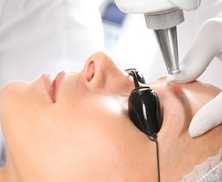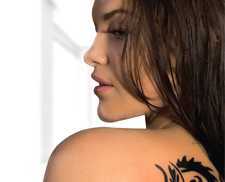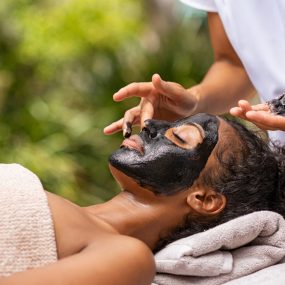Black skin disorders and pigmentation can cause unnecessary havoc and those suffering from these conditions are often likely to experience anxiety, low self-esteem and other psychological problems as a result. Battling these conditions can stop sufferers from continuing with their daily lives and prevent them from doing normal everyday fun activities. But like with many other skin disorders, there are various ways to treat these conditions.
In order to educate ourselves, let’s explore the different causes of skin conditions that are most common in black skin and the direction you would need to take in order to boost your confidence and get you looking and feeling you are very best in no time.
Acne & Acne Scars
A recent study found acne to be the most common disorder in black skin types. Excessive oil build-up, bacteria and dead skin cell all contribute to why clogged pores are consequently formed. Black people tend to suffer from inflammatory acne, which luckily, is the easiest type of acne to treat. The treatment involved in managing acne in black skin is no different to the treatment used in other skin types/races but black people tend to have fewer nodules and cysts. During acne, darker skin types can also suffer from Post-inflammatory Hyperpigmentation (PIH) and this usually happens where the skin has experienced some form of trauma acne scars. As the skin heals, the wounded area appears darker in colour. These dark spots do eventually heal but it’s a time-consuming recovery and can be miserable for the patient if they have to wait for the results.
Melasma
This is a skin condition that often occurs during pregnancy but non-pregnant women and men are also susceptible to the disorder. It consists of large patches, particularly around the face and cheeks, and usually happens to those over the age of 40. There are different types of melasma and it can be caused by hormone treatments, medication and sun exposure as well as pregnancy.
Ashy Skin
This condition occurs in every race but is a lot more noticeable in black skin. It is the result of dry skin and sufferers are often left with a greyish complexion. This can be quite frustrating for women because once the skin becomes flaky and dry, it can be difficult to apply makeup, as makeup can further dry out the skin and increase the ashy look.
Keloids
Keloids are raised, dark and thick scars on the skin and usually form following an injury, which is why black skin doesn’t respond well to body modification, piercings, deep cuts or burns. In some cases, the scar tissue overproduces and a keloid forms over the wounded area. This can occur immediately after an injury or over a period of time and can range from itching, burning or being tender to touch. Any time black skin becomes injured, this dramatically increases the risk of keloids a considerable amount more than any other race.
Lichenification
This is a harmless condition but is often the result of other skin conditions such as eczema or dermatitis. Lichenification can be caused by stress and consists of excessive itching or rubbing, resulting in an irritable rash. It is treatable and the skin can return to normal once the inflammation is kept under control but it can be difficult to identify in black skin and is often confused with fungal infections.
Vitiligo
Skin gets its colour from pigment cells called ‘melanocytes’. When the cells are damaged they can no longer produce pigments. Vitiligo is the loss of skin pigment causing white or colourless spots to form. This is common in all races but just like ashy skin, it is more noticeable in black skin. Over time, the patches of colourless skin grow larger and can appear anywhere on the body. The origins behind this condition aren’t completely known but some experts have suggested it could be linked to the immune system or even genetics.
Razor Bumps
This is a condition more scientifically known as Pseudofolliculitis Barbae and is commonly found in black men. This is the result of a curved hair shaft and once the hair tip has been cut or shaved, the hair goes back into the hair follicle and causes bumps. If women suffer from this disorder, it usually occurs around the chin area.
Hyperpigmentation (Dark Spots & Scars)
The scientific term for this condition is Post-inflammatory Hyperpigmentation (PIH) and usually happens if the skin has experienced some form of trauma such as insect bites, acne, burns or surgical cuts. As the skin heals, the wounded area appears darker in colour. These dark spots and scars do eventually heal but it’s a time-consuming recovery and can be miserable for the patient if they have to wait for the results.
Pityriasis Alba
Pityriasis Alba mostly affects black children in the face and arms but it has been known to appear on other areas of the body. In this instance, scaly patches of skin that are round and light in colour form. Unlike vitiligo, the colour change is temporary and disappears after treatment has been applied.
Dermatosis papulosa Nigra
DPN is a condition that occurs in roughly one-third of the black population. These very small, raised growths are harmless and more than twice as many women suffer from this as men. The growths are largely hereditary and mostly begin during the adolescent stages of life. These growths are not connected to cancer but many people have them removed for cosmetic reasons.
In spite of some of these conditions being harmless, it still does not stop suffers from feeling miserable and uncomfortable. In order to manage these conditions, there is a range of Black Skin Care treatments which you can opt for in order to care for your specific skin disorder. The majority of these disorders are confidence takers but with the right treatment, home-care and a positive attitude, it is possible to receive and maintain extraordinary results.































